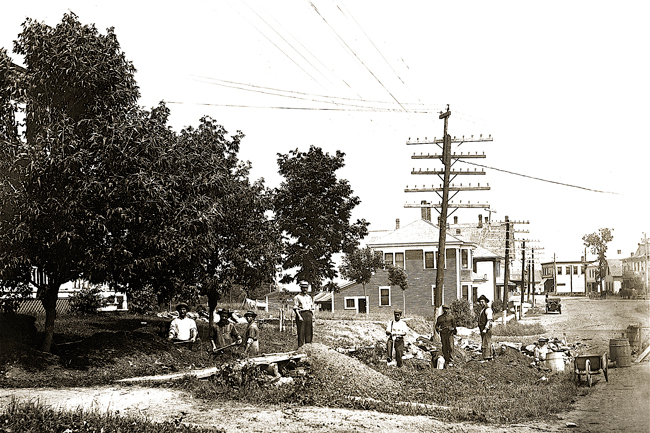B A C K T H E N
Italians
Italian “peek and shuvle” (pick and shovel) men dig a trench for a sewer line. From the late 1800s to 1920 some four million Italians arrived in the United States. Most were contadini, or peasants, from the impoverished south, where many had been virtual serfs, and sent money home to their families. Many returned to Italy during the winter.
Working under a padrone, an Italian contractor, the laborers had little opportunity to learn English or to mix with the natives. Arriving as a group in a small town, they were objects of much curiosity. Rumor had it that all Italians carried stiletto knives and had fiery tempers, but they proved peaceable enough, although prone to excitement if their pay was delayed. If one was injured or killed in an accident, the press referred to him simply as “an Italian.”
The Italians typically “boarded themselves,” erecting primitive shelters in makeshift camps, just as Irish laborers had once done. They built ovens for baking their bread and paid local boys for birds, woodchucks, and other wildlife to eat. After the construction of the Wiscasset, Waterville, and Farmington Railroad, in Lincoln and Kennebec counties, it was said that not a bullfrog was left in the valley of the Sheepscot.
Text by William H. Bunting from Maine On Glass. Published by Tilbury House Publishers, 12 Starr St., Thomaston, Maine. 800-582-1899.
Maine On Glass and prints of the photographs are available through the Penobscot Marine Museum: PenobscotMarineMuseum.org.

